|
person > biography
VALERY KONEVIN
Valery KONEVIN was born on the 16th of July 1952 in an
upper middle-class family in Leningrad.
His grand-grandfather Dimitry Kosorotov was the Chief Pathologist
of Russia in St. Petersburg and performed historical
autopsies, including the autopsy of Gregory Rasputin. Grandfather Michael
Tuberovsky was a famous playwright of fairy tales in Leningrad
who encouraged Valery’s early art career.
By his own choice Valery began a science career after graduating from
the Aircraft Design and Production faculty of the Kazan State
Technical University at 1975. In 1978 he took part in the design of
the first soviet flying rocket. He was also involved in
the design of helicopters and super sonic aircrafts.
After serving two years in the Soviet Army as an officer of
the Strategical Rocket Division, he studied philosophy, biology and
mathematics in his free time. In 1980 he unexpectedly dropped his
science career, entered the Art Academy in Leningrad,
took part in Underground art activity and was forced to leave the
USSR in 1990, partly because of the Perestroika and partly thanks to the
expiration of his 10 year top secret conspiracy agreement.
He immigrated to Israel where he attracted attention of art
critics and became an internationally recognised artist, travelling
to USA, UK, France, Germany and participating in numerous
expositions as a visual artist and a photographer.
He lives and works in Belgium, Oostende since 1994. He won
the Nikon Photography Contest International’s award
in 1998 in Japan and his paintings and photos are in international
museums, including many private collections around the world.
His artistic language is unmistakable, unique, bearing traces
of his early theatrical childhood memories. His abstract paintings
are a result of the mathematical “primary (base) art”,
the approach based on fusion of topology and biology as archetypes
and transcendental objects of the mind.
Children:
|
|
| Daughters: |
Alisa (1984-USSR) |
| |
Elizabeth (1991-Israel) |
| Son: |
Valery (1997-Belgium) |
Education:
1969-1975 |
MSc in Aircraft Engineering, Tupolev State University,
Kazan, Russia
|
| 1985-88 |
"Muchin" Art Academy of StPetersburg (monumental
sculpture faculty)
(Non-official education because of political reasons)
|
Professional
experience:
1975-78 |
Engineer: Designer of rockets & aircrafts |
| 1978-80 |
Military Service as an officer of a strategical
rocket division |
| 1980-83 |
Scene Designer of Yekaterinburg Academical
Theatre |
| 1983-85 |
Designer of Recreation Areas in Forestry of Yekaterinburg
|
| 1985-90 |
Municipality Carpenter in St. Petersburg (in order to
have an independent art studio). Takes part in the Underground
movement of the city. Works at Pushkinskaia 10, a famous
first independent art community in Leningrad, later known as "The
Museum of Nonconformist Art", StPetersburg |
| 1990 |
Immigrates with the family to Tel-Aviv,
Israel and becomes a professional artist
|
| Artistic Residences: |
|
| 1952-90 |
StPetersburg, Kazan, Yekaterinburg, Novosibirsk. Russia |
| 1990-91 |
Tel-Aviv. Israel |
| 1991-92 |
NY. USA |
| 1992 |
Paris. France |
| 1993 |
London. UK |
| 1994-present time |
Lives & works in Oostende. Belgium |
| |
|
|
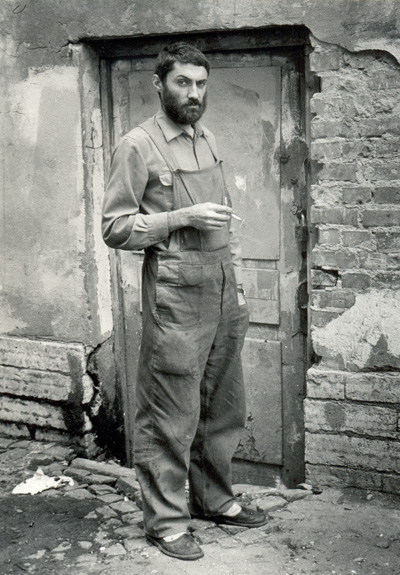
Artist at one of his unofficial studios. Leningrad.
1988. Photo by Rez
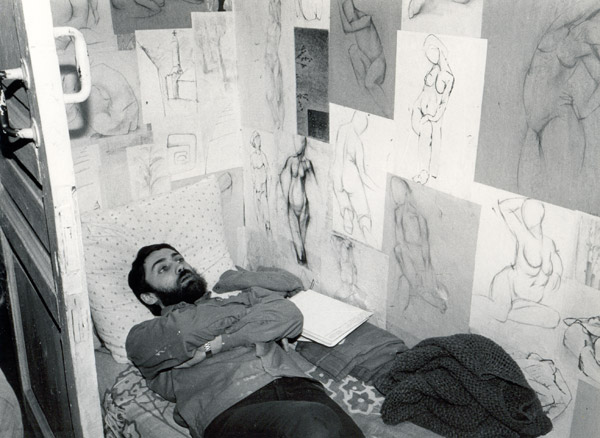
Artist used his drawings as wallpaper because of
the lack of money. Leningrad. 1987. Photo by
Rez
|
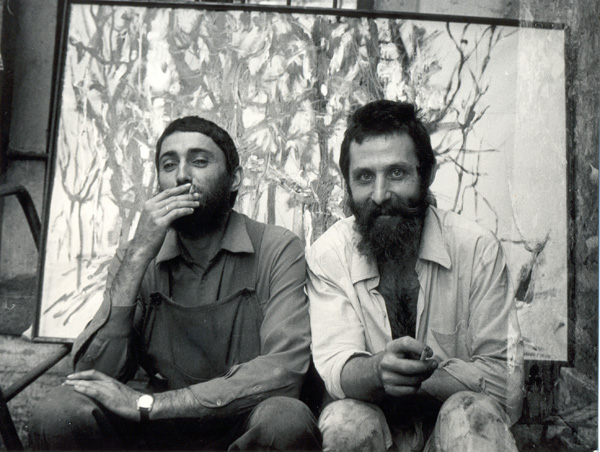
Artist(left) with Yuri Gurov. 1989. Photo by Rez
|
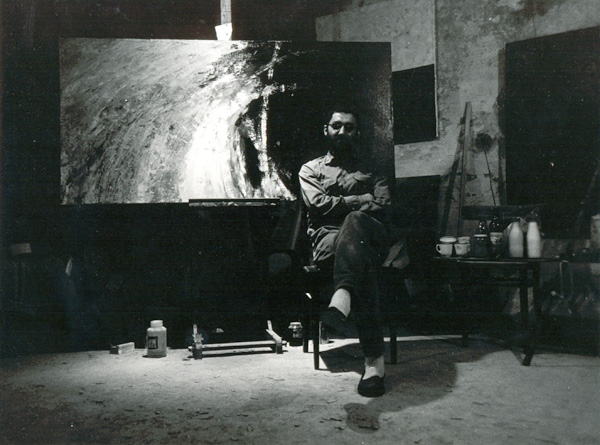
Artist in one of his unofficial studios before immigration.
Leningrad. 1990. Photo by Rez
|
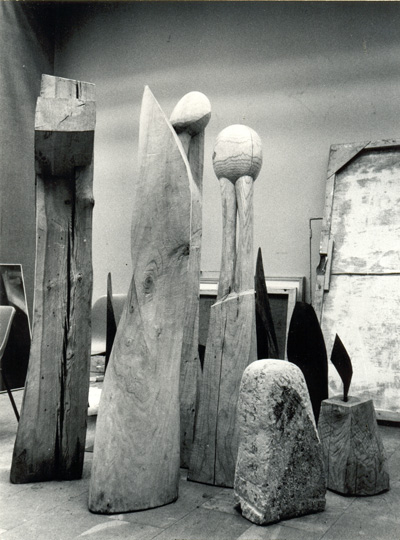
Sculptures of the artist rejected by the committee
of Unofficial Artists
in the Central Exposition Hall. Leningrad. 1989. Photo
by Rez
From 1994 onward the artist lives and works in Oostende, developing
mostly his abstract paintings which he calls: Primary
Art. The original idea came first during his aerodynamical
studies in the University when he got fascinated by
the idea that two different mathematical fields could
be transformed from very simple abstract form like the flow
of air around a circle to a very complex "real
aerodynamical flow" around a very complicated profile
of a wing of an aeroplane, by a math equation, but
not opposite.
Physiologically our senses form a model of outside
world as a kind of map or set of patterns, which is
transmitted to a brain forming different brain’
maps based on evolutionary developed primary patterns.
The patterns should reflect some "universal language"
like Kant's transcendental objects or "pure
mind" because any brain is a part of the Universe
itself.
Understanding these primary objects and their interaction
is partly possible through the study of the evolution of life,
especially the chemical end molecular evolution taken together
with the psychological development of a child.
Figurative art of the artist is two-dimensional and
simply inspired by children’s drawings and primitive
art, with the same primary principles of objects with
boundaries, coloured differently inside and outside,
where the line is mostly important.
Artist takes only BW photos. Special "theatrical
or surrealistic" style was inspired by his children’s
play and was firstly used in the compositions for his figurative
paintings, but developed later to more "photographic" style,
based on shadows, light and movements of the camera.
Some works are presented at www.kunzt.be
and at www.saatchi-gallery.co.uk
under the name Konevin Valery for paintings
and at Conevin Valery for photos.
|

